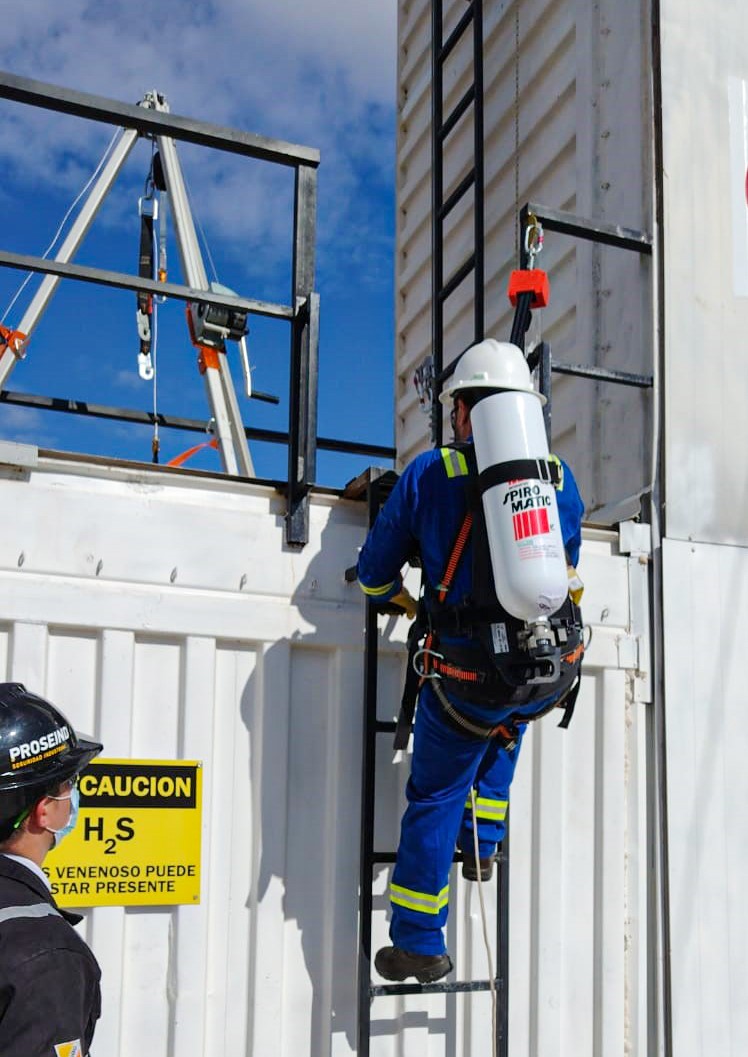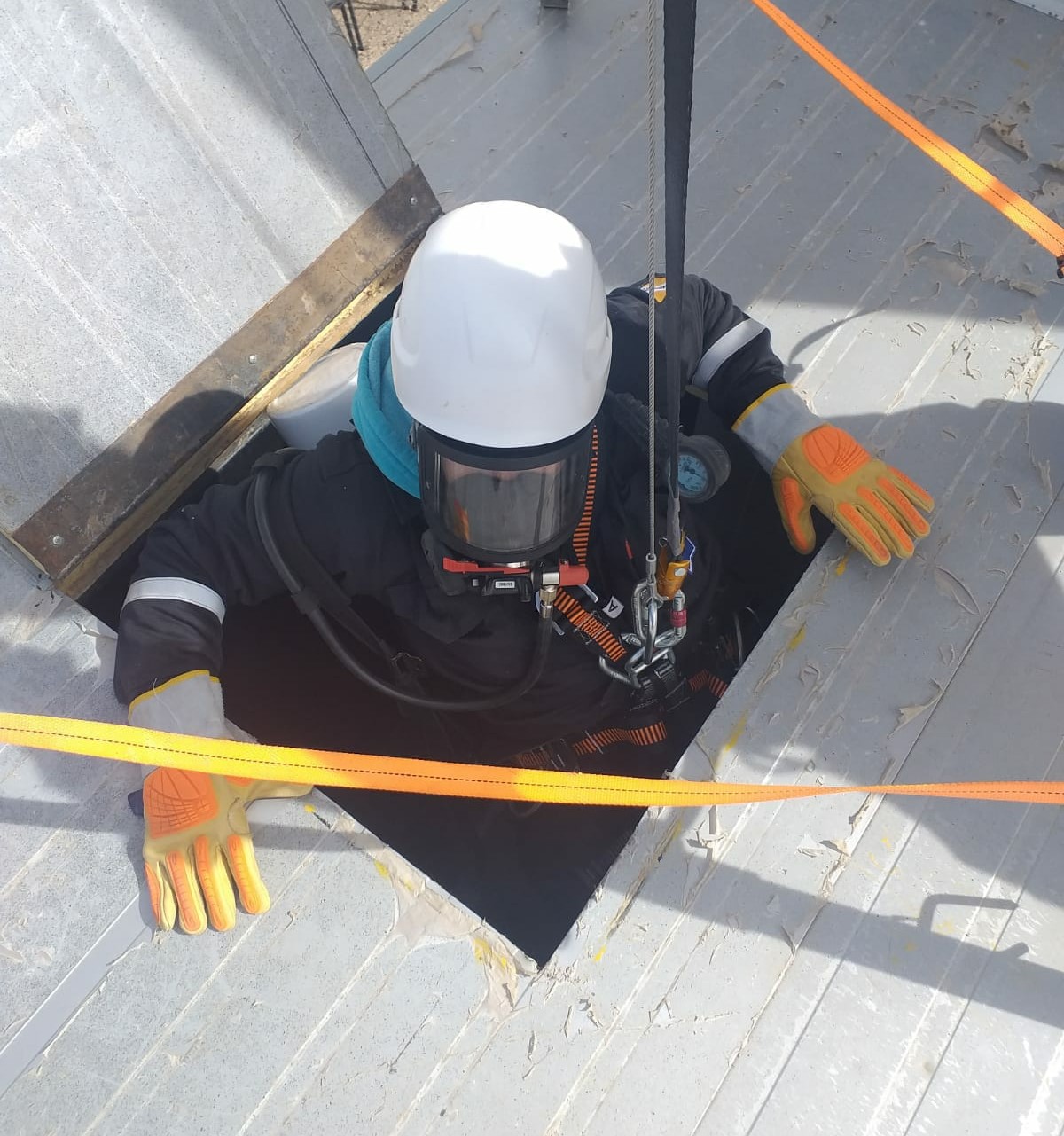Product added to cart
What is H2S gas?
H2S gas is a chemical compound that stands for hydrogen sulfide carbonyl sulfide gas. It is a colorless gas and is commonly recognized for its distinct rotten egg smell. H2S gas is also widely referred to as sewer gas, sour gas, stink damp, or hydrosulphuric acid. H2S gas is extremely poisonous to humans, corrosive, and very flammable. When it burns, H2S gas emits another deadly gas: sulfur dioxide, which has similar symptoms and outcomes to H2S gas exposure. Unfortunately, year after year workers are incidentally exposed to H2S gas, many of who suffer detrimental consequences since an unsafe amount can kill a worker in under 10 seconds.
Where can it be found?
H2S gas is soluble in water and oil. It could be released anytime the substance is heated or depressurized. It is found in crude petroleum, natural gas, some mineral rock, and hot springs. Therefore, the drilling and extraction of crude oil and natural gas create hydrogen sulfide gas emissions. It may also be present when bacteria in organic materials or human/animal waste are broken down in the absence of oxygen. Industries that produce the most substantial amounts of H2S gas include wastewater treatment, tanneries, paper mills, glue and dye production, the mining industry, construction, and the drilling and refining of natural gas. The gas itself is heavier than air and therefore tends to build up in confined, low spaces. Areas with poor ventilation, such as sewer lines, manure pits, or basements, are likely places for H2S gas to collect and sit. Other settings where H2S gas may be a concern include the breaking down of wood into pulp, working in swamps or landfills, and in mining situations where mineral rock is present.
Symptoms and warning signals for H2S gas
H2S gas can be deadly even in the smallest quantities, and significant levels of the gas often kill the victim’s sense of smell. Therefore, the distinct “egg odor” should not be used as a measure of how much H2S gas is present. A worker can find themselves in a fatal situation in mere seconds. If there are low levels of H2S gas present, eye soreness, breathing troubles, coughing, runny nose, headache, confusion, nausea, or disorientation may occur. H2S gas is so deadly due to the small amount that is capable of killing a worker. Thus, any symptoms that may result from even the lowest level of H2S gas should not be taken lightly.


What are the hazards and risks associated with H2S gas exposure?
H2S gas is considered an irritant and a chemical asphyxiant, which is any substance that inhibits the flow of oxygen from our bloodstream to our cells or prevents cellular respiration even if there is ample oxygen in the immediate environment. In other words, H2S gas can effectively stop a worker’s ability to breathe when the lungs absorb the gas. Depending on the level present, a worker will generally notice irritated eyes, running nose, and coughing. If the levels increase, the consequences are increasingly severe, with side effects mentioned previously beginning to occur, like dizziness and nausea to death within seconds.
The deadly numbers and statistics from H2S gas
According to the Occupational Health and Safety Administration, H2S is one of the leading causes of workplace gas inhalation deaths in the United States. According to the Bureau of Labor Statistics, hydrogen sulfide gas caused 60 worker deaths between 2001 and 2010. 800 ppm is the lethal concentration for five minutes of exposure. Concentrations over 1000 ppm cause immediate collapse with loss of breathing, even after inhalation of a single breath - death can occur within one to four hours of exposure.


What can be done to mitigate H2S gas hazards?
So what can be done to protect your lone workers from this invisible threat? There are a number of proactive steps that you can take such as: Provide respiratory and personal protective equipment (PPE). Provide an automated check-in system such as a lone worker safety app All electronics need to be enclosed in an intrinsically safe case Install explosion-proof and corrosion-resistant air and exhaust ventilation systems. Train and educate your team about hazards and controls including the symptoms of H2S exposure and the protocols to follow if exposed. Develop and practice emergency rescue procedures.
Detection equipment for hazardous gas
H2S detection equipment encompasses devices that detect and alert the worker of unsafe air quality through sound and vibratory alarms. Many available devices are multi-gas detecting and can spot a number of harmful gases and fumes when work is being performed. They range in price from hundreds to thousands of dollars, depending on the safety needs of your workplace. Disposable or maintenance-free gas detectors that do not require sensor or battery replacement are also available. Thanks to advances in technology, H2S detection equipment, and tools are becoming smaller and more compact allowing more lone workers to carry these devices into remote areas and tight spaces.
Categories
- Libus Service (0)
- Workshop (0)
- Eventos (0)
- Protección Auditiva (0)
- Libus Comunidade (0)
Recent Posts
Archive



